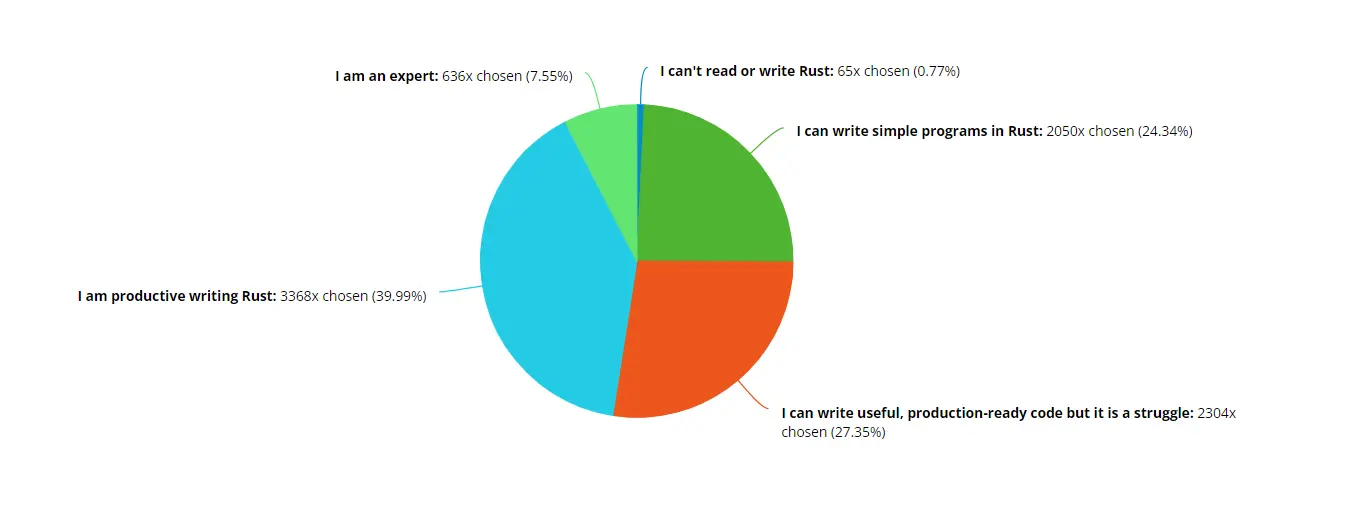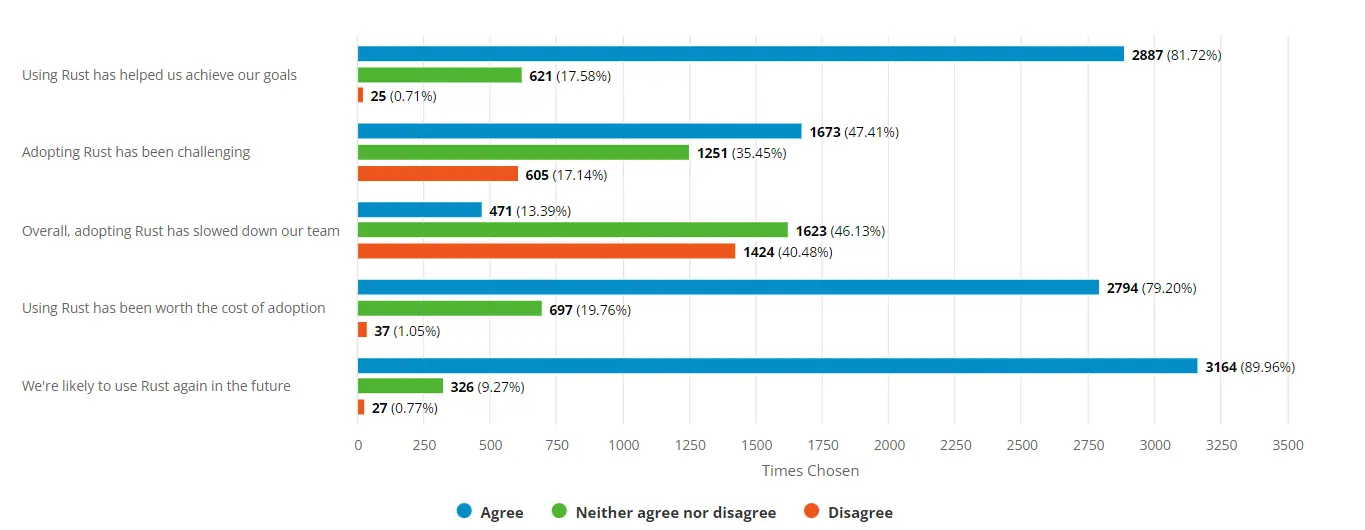The results of the Rust 2021 survey are now available. Ninety percent of respondents said they use Rust, 5% said they have used Rust in the past but no longer use it, and 4% said they have not used Rust at all.
The survey was conducted in December 2021 and is based on feedback from 9,354 respondents. Officials noted that the Rust community is growing, and the survey had the highest number of complete survey responses ever, beating last year’s total by about 1,500. The survey was available in 10 languages, with 78 percent completing the survey in English, followed by simplified Chinese (6 percent), German (4 percent) and French (3 percent). Although English was the language in which the majority of respondents completed the survey, respondents came from all over the world. The United States was the largest country with 24 percent, followed by Germany (12 percent), China (7 percent) and the United Kingdom (6 percent). In total, the survey covered 113 different countries and regions.
However, English is not the language of choice for all Rustaceans, with nearly 7% not willing to use English as the language of technical communication. Another 23 percent of respondents preferred a language other than English. The most common preferred languages (other than English) broadly follow where Rustaceans live, with Simplified Chinese, German and French in the top 3. And Japanese, Simplified Chinese and Russian speakers are the least likely to use English in technical conversations.
The percentage of people who use Rust is continuing to increase. Among respondents who use Rust, 81% use it at least once a week, compared to 72% in last year’s survey. 75% of Rust users say they can write production-ready code, while 27% say it is sometimes difficult to write useful, production-ready code. Another 1 percent say using Rust is boring, and a quarter say Rust doesn’t have any real advantages over other programming languages.

Some other findings include.
- 59% of respondents who use Rust use it at least occasionally at work, and 23% use Rust for most of their coding. this is a significant increase from last year, when only 42% of respondents used Rust at work.
- 83% of those who use Rust at work find it “challenging,” but it is unclear how much of this is a problem specific to Rust or a challenge of adopting a new language. During the adoption process, only 13% of respondents found that the language was slowing down their teams, and 82% found that Rust was helping their teams achieve their goals.
- When asked if their team would be likely to use Rust again in the future, 90 percent said yes. 89% of respondents who use Rust at work say their team finds programming fun.
- As for why respondents use Rust at work, the most important answer is that it allows users to “build software that is relatively correct and bug-free,” with 96% agreeing with this statement. After correctness, performance (92%) was the second most popular choice, and 89% of respondents agreed that they choose Rust at work because of its highly regarded security attributes.
- Only 3% of respondents said that Rust is a risky choice in a production environment.

Looking ahead, while the 2021 survey shows that the Rustaceans community is growing in a healthy way, there are some challenges that need to be addressed. The main concerns are that the language will become too complex (33%), and that people working with Rust will not find the proper support they need to continue to grow the language and community in a healthy way (30%).